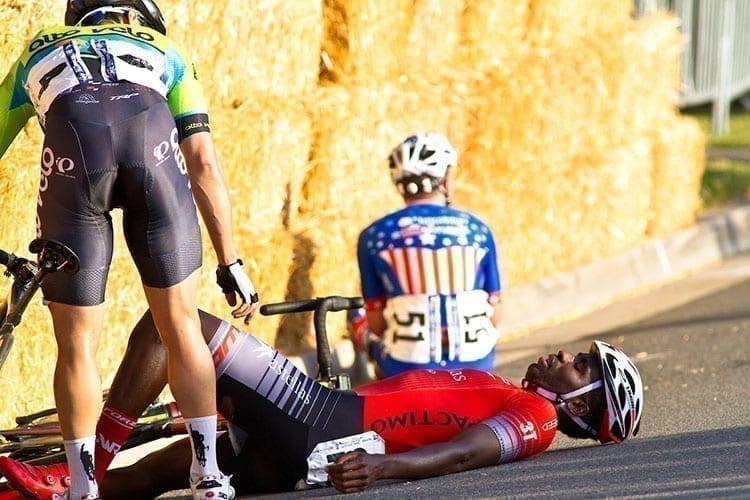Cycling has become one of the most mainstream and popular outdoor activities to date, enjoyed by individuals of every reasonable age you can think of. However, while being outside and active is great, that also makes you more susceptible to various common cycling injuries that you must be aware of and know how to prevent, which is exactly what you are here for.
Falls and Collisions
People love cycling, be it leisure cycling, commuting to work or school, or more extreme variants like mountain biking or using motorized bikes. This remains a leading outdoor activity for its numerous health benefits associated with the simultaneous movement of every muscle and limb. Unfortunately, there is always the risk of falls and collisions when cycling is involved. It should come as absolutely no surprise that falls and collisions are the highest risk factors for cyclists, and that they can result in very serious, fatal injuries. Therefore, it is important that cyclists take appropriate measures to prevent them. While men and children between the ages of 9 and 15 years old are at the highest risk, everyone can have an accident of various severities.
Therefore, instead of getting on your bike blissfully oblivious, the best way to prevent accidents is to ride safely and consciously at a speed you are proficient at, in the context of your surroundings. In case you are riding at a speed that could potentially risk losing control over your bike, you unquestionably need more experience, until it feels natural to ride your bike at such a speed. Similarly, on hazardous terrain or in busy traffic, you need to slow down to adapt to your surroundings. If you are cycling off-road and you have no clues what the terrain ahead will be like, slow down to a safe speed so you can seamlessly navigate through sudden turns, dips, or obstructions along the path.
Secondly, always obey the laws of traffic to avoid putting yourself at safety and legal risks. Remember that others on the road may not always be able to see you, especially large vehicles which have a blind spot, which is particularly dangerous for cyclists on the road. Keep a good distance, use hand signals to indicate your intentions to turn or change lanes, and move at a decent but not dangerous speed, to avoid becoming an obstacle.
Safety gear can also be beneficial. Helmets, for example, are considered a must as head trauma is one of the injuries with the greatest potential of fatality. You should also make sure to wear reflective clothing and use lights at night, both on your bike and your helmet. If you can be seen, your chances of getting involved in a collision are much lower.
Joint Pain
The repetitive nature of cycling makes it perfectly dangerous for developing joint pain through repeated stressors. If you use cleats to fasten your feet to the pedals, make sure they are positioned correctly to avoid putting undue strain on your knees. Similarly, if your bicycle is not adjusted properly, for example, if the seat is too high or too low, the movement becomes inefficient and can cause harmful stress to your joints, in particular, your knees.
Making sure your bicycle and cleats are adjusted properly can help the effective prevention of these injuries, as can specialist insoles to ensure correct foot positioning. In cases of a bad injury, it is recommended that you get medical help from nurses. They are professionals who have passed the NCLEX RN exam and have the required expertise to offer help.
Muscle Strain, Fatigue, and Back & Neck Pain
Stating the obvious, even though you’re moving, cycling also often means staying in a similar position for long periods of time. This can cause strain on any muscle, especially if the position is not ergonomically suitable. A singular and rigid position on your bike, sustained for long periods of time, means that your back is subjected to large amounts of stress. To avoid this, make sure your bike is well adjusted to grant you a suitable position for your height and bicycle, and also take regular breaks if necessary. Ultimately, this also applies to neck pain, your neck is an extension of your spine after all.
Similarly, other muscles, such as your hamstrings and calves may struggle due to the repetitive motion and position given by the bike’s setting. The muscle strain will be less evident while cycling, but will rather prove unpleasant engaging in other activities. Adopting a range of exercises aside from cycling, and making sure to warm up and cool down, can help these muscles stay flexible.
If you have problems with muscle fatigue, massages can help, as well as taking suitable breaks from heavy exercise.
Skin Problems
A problem that is perhaps less pleasant to talk about is skin rashes and sores, especially saddle sores. Proper clothing can help prevent these issues altogether while using creams can help alleviate any additional symptoms as they occur. If needed, you may also want to consider gloves to prevent cold wind and chafing, which can cause skin irritations and other inconveniences.
Conclusion
All in all, before you decide to embark on your next cycling adventure, you should definitely weigh in the risks and make further adequate considerations. You will most definitely reap the benefits, and the benefits only of being out and about in the mountains, or the local park. Remember to slow down, be mindful of your surroundings, and joints, take your breaks, never underestimate your saddle for your bum sores shall be epic, and stay hydrated!
No products found.
















